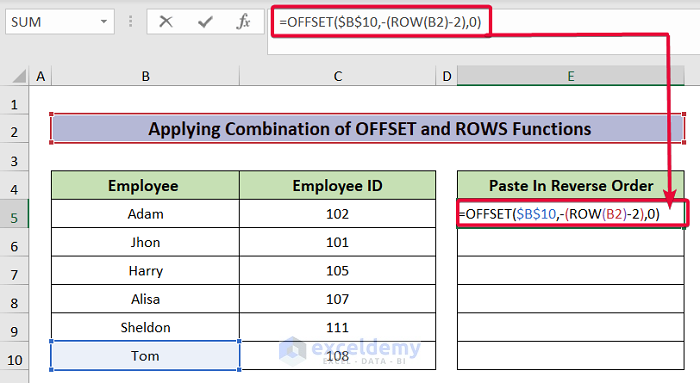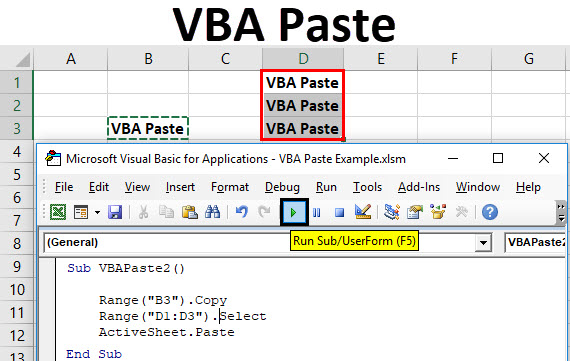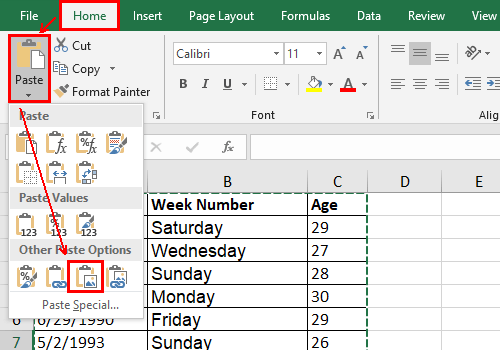Excel Tip: Paste with a Twist

Unlock the full potential of Excel with a powerful yet often overlooked feature: Paste Special. This versatile tool allows you to manipulate data in ways that go beyond simple copying and pasting, empowering you to customize your spreadsheets and streamline your workflow. Whether you're a seasoned Excel user or just starting out, understanding the intricacies of Paste Special can elevate your data management skills to new heights.
In this article, we'll delve into the world of Paste Special, exploring its various options and practical applications. By the end, you'll be equipped with the knowledge and confidence to tackle complex data manipulation tasks, making your Excel experience more efficient and enjoyable.
Understanding Paste Special: The Fundamentals

Paste Special is an Excel feature that offers a range of options to customize how data is pasted into a worksheet. It provides more control over the pasting process compared to the standard “Paste” command. By default, when you copy and paste data, Excel maintains the original formatting and values. However, Paste Special allows you to modify these aspects, making it an invaluable tool for data manipulation and customization.
Here's a breakdown of the key options within Paste Special:
- Values Only: This option pastes only the values from the copied cells, discarding any formatting or formulas. It's ideal for extracting pure data from a formatted range.
- Formulas Only: With this option, you can paste only the formulas from the copied cells, without any values or formatting. It's useful for creating template worksheets or sharing formulas without exposing sensitive data.
- Formats Only: If you want to apply a specific set of formats from one range to another, this option is your go-to. It copies and pastes only the formatting, leaving the values and formulas intact.
- Comments: This option allows you to paste cell comments along with the data. It's handy for sharing insights or notes associated with specific cells.
- All: As the name suggests, this option pastes everything from the copied cells, including values, formatting, and formulas.
- Transpose: This unique feature enables you to swap the rows and columns of the copied data. It's a quick way to transform vertical data into horizontal data and vice versa.
Additionally, Paste Special provides the flexibility to combine these options, allowing you to customize the pasting process further. For instance, you can paste values and formats while leaving formulas untouched, or vice versa.
Practical Applications of Paste Special

Now that we’ve covered the fundamentals, let’s explore some real-world scenarios where Paste Special can be a game-changer:
Data Normalization
Imagine you have a dataset with various formatting styles, and you need to normalize it for analysis. With Paste Special, you can quickly paste only the values, ensuring consistent formatting across the board. This is especially useful when dealing with large datasets or when collaborating with others who use different formatting conventions.
Formula Extraction
Sometimes, you may want to share a worksheet but keep the formulas hidden to protect your intellectual property. Paste Special’s “Formulas Only” option allows you to do just that. You can extract the formulas and share them separately, providing insights without revealing the underlying calculations.
Formatting Transfer
If you’ve spent time crafting a specific set of cell formats, you can easily apply them to other cells using Paste Special. This saves you from manually recreating the formatting, making it a time-efficient solution for consistent spreadsheet design.
Data Transposition
The Transpose option within Paste Special is a powerful tool for rearranging data. For instance, if you have a list of products with their respective prices, and you want to transform it into a table with products as rows and prices as columns, the Transpose feature comes to the rescue. It’s a quick and efficient way to reorganize your data without manual effort.
Comment Management
Comments are a valuable feature in Excel for adding notes or explanations to cells. With Paste Special, you can copy and paste comments along with the data, ensuring that important insights travel with the information. This is particularly useful when collaborating on worksheets or when you need to provide context for specific cells.
Advanced Techniques with Paste Special
Paste Special becomes even more powerful when combined with other Excel features and functions. Here are some advanced techniques to take your data manipulation skills to the next level:
Using Paste Special with Formulas
When working with complex formulas, Paste Special can be a lifesaver. For instance, if you have a formula that references a range of cells, and you want to apply the same formula to a different range, Paste Special can help. By copying the formula and pasting it with the “Formulas Only” option, you can quickly adapt the formula to the new range without manual adjustments.
Combining Paste Special with Conditional Formatting
Conditional formatting is a powerful tool for highlighting specific data based on criteria. When combined with Paste Special, you can quickly apply conditional formatting rules to different ranges. This is especially useful when you want to standardize the appearance of multiple worksheets or when you need to highlight specific data points across different datasets.
Utilizing Paste Special with Data Validation
Data validation is a feature that ensures data entered into a cell meets certain criteria. With Paste Special, you can easily transfer data validation rules from one cell to another. This is beneficial when you have a set of cells that should only accept specific types of data, and you want to ensure consistency across your spreadsheet.
Best Practices and Tips
To make the most of Paste Special, here are some best practices and tips to keep in mind:
- Use Shortcuts: Excel offers keyboard shortcuts for Paste Special, making it faster and more efficient. For example, you can use Ctrl + Alt + V to open the Paste Special dialog box, and then use the arrow keys to navigate and select the desired option.
- Explore the Options: Paste Special offers a range of options beyond the ones mentioned. Take the time to explore and experiment with these options to find the ones that suit your specific needs. You might discover new ways to manipulate data that can simplify your workflow.
- Practice with Sample Data: If you're new to Paste Special, start by practicing with sample datasets. This way, you can experiment without the risk of altering critical data. As you become more comfortable, you can apply these techniques to your real-world projects.
- Combine with Other Features: As mentioned earlier, Paste Special works best when combined with other Excel features. By integrating Paste Special with functions like formulas, conditional formatting, and data validation, you can create powerful data manipulation workflows.
Conclusion

Paste Special is a versatile and powerful tool in Excel’s arsenal, offering a range of options to customize your data manipulation. By understanding and utilizing its various features, you can streamline your workflow, enhance data consistency, and elevate your Excel skills. Whether you’re a data analyst, a financial professional, or simply a spreadsheet enthusiast, Paste Special is a valuable asset to have in your toolkit.
Can I use Paste Special to combine data from different worksheets or workbooks?
+Absolutely! Paste Special can be used to combine data from different worksheets or even different workbooks. This is particularly useful when you need to consolidate data from multiple sources into a single worksheet.
Is it possible to paste only the formatting from one cell to another without affecting the values or formulas?
+Yes, the “Formats Only” option in Paste Special allows you to do exactly that. This is handy when you want to apply a specific set of formats to a range of cells without altering the underlying data.
Can I use Paste Special to quickly create a table with data from a list?
+Absolutely! The Transpose option in Paste Special can be used to transform a vertical list into a table with columns. This is a quick and efficient way to create structured tables from raw data.



